Remember the Nissan NX of the mid-'90s? The tiny, econobox-based sportster was as cute as a bug and spent its brief lifespan mixing it up with other long-gone, sporty front-wheel drive affordables like the Mazda MX-3, Honda Civic CRX, Toyota Paseo and even the Hyundai Scoupe. While there were a lot of inexpensive, racy looking coupes back then, most automakers just don't see any money in that segment anymore. Instead, when they look to spin something off of their entry-level B-class chassis, most veer toward the white-hot crossover segment.
Consider the latest example, Nissan's 2011 Juke. Come to think of it, this in-your-face city slicker has some startling similarities to the NX. For one, at 162.8 inches long, it's deceptively small – just 0.4 inches longer than the '90s coupe. Further, both the Juke and the NX1600 rely on 1.6-liter four-cylinder power. And like the Sentra-based NX, the more emotional Juke is based on the same humble underpinnings that give structure to Nissan's workaday offerings, in this case, the Versa and Cube. And while the Juke may not be cute as a bug, there's something downright insectian about its Predator-like mug.
Despite not being a traditional sporty car, Nissan has been talking up its controversially styled mini-ute with many of the same descriptors, so we hopped a plane to Vancouver to see if the Juke could bob and weave its way into our hearts. Follow the jump to find out how it fared.
Photos copyright ©2010 Chris Paukert / AOL
We would love to just dive into a discussion of the Juke's performance – especially considering it offers such goodies as a new turbocharged, direct-injected powerplant and torque-vectoring all-wheel drive. Thing is, we can't. Like you, we're still puzzling over its appearance. So before we go any further, yes, the Juke's face is sure to be its biggest bone of contention – but among the young buyers that Nissan is seeking, it's also just as likely to be among its chief selling points.
So what gives with the Juke's look? It's as if someone took a Mr. Potato Head automotive design kit and handed the pieces to a Red Bull-addled toddler. Some lights here, a few grille bits over there, turn signal repeaters someplace... it's design anarchy. We can't remember ever being at a press introduction where company officials actually felt the need to explain where the headlights are (they're situated in those large bumper-level nacelles – the bubble-like protuberances up top house the running lamps and turn signals). The thing is, in person, we like the Juke's appearance considerably more than we thought we would.
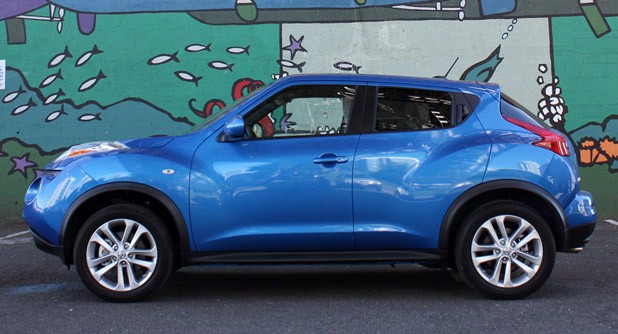
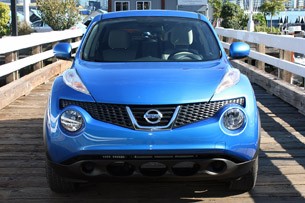

For one thing, there's the scale. As we've alluded to before, the Juke is much smaller than a typical B-segment CUV – it's shorter than a Suzuki SX4, yet it has far more presence than anything that might reasonably be considered a rival. Its pocket-sized dimensions serve to reduce the intimidation factor and amp up its amusement. When viewed in-the-metal, the Juke's persona is more like that of a pug dog dressed in an oversized studded collar than a slobbering pit bull wearing the same. We're not ready to call it cute or sexy – not by a long shot – but it's properly unique and offbeat.
And there are plenty of eye-catching elements elsewhere. The Juke's profile is dominated by its balloon fenders, a design choice that mandated larger-than-normal 17-inch wheels. But there are also scads of interesting details, including the rear door handles hidden in the C-pillar, the aggressively tapered greenhouse and the unusual visibility of the front running lamps, which can still be seen peeking out even when checking out the Juke's rear three-quarter view.
The Juke is powered by Nissan's first North American application of its new 1.6-liter direct-injected turbocharged four-cylinder engine, and in this state-of-tune, it provides a healthy 188 horsepower (at 5,600 rpm) and 177 pound-feet of torque (from 2,000-5,200 rpm). That's quite a bit of scoot for a vehicle that's about the size of a Ford Fiesta hatchback. In fact, it's more powerful than the 170-hp 2.5-liter four found in Nissan's Rogue, which weighs hundreds of pounds more and is longer by over 20 inches.
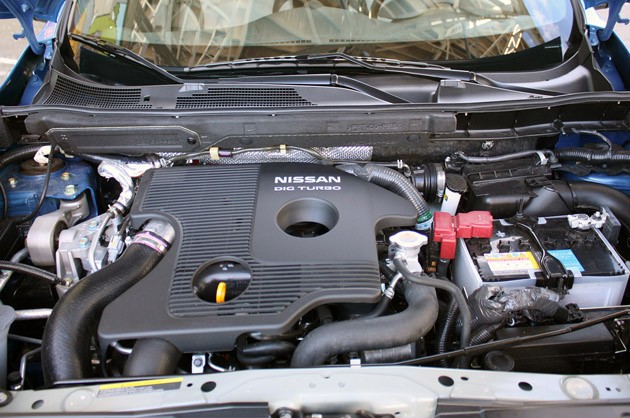
While continuously variable transmissions (CVTs) are hugely efficient and deliver excellent fuel economy, we've long excoriated this type of gearbox for their fun-sapping, rubber-band-like power delivery. Simultaneously, we've come to respect Nissan's take on the genre, as its XTronic family of CVTs tends to behave more like traditional torque-converter automatics (at least in later variations), with the included six driver-selectable 'speeds' furthering the illusion. As we've seen in the past with the Murano and Maxima, it's possible to deliver a sportier-than-average driving experience in a CVT-equipped vehicle, and that's exactly the case here. There's good power on tap at all times, and calling for 'shifts' via the manual gearlever detent results in swift action. Use of the CVT also enables front-wheel drive models to return 27 miles per gallon in the city and 32 on the highway. While Nissan didn't offer any acceleration times, we suspect the Juke will hit 60 miles per hour in the low seven-second range. Sadly, there are no paddle-shifters available, which strikes us as an odd, low-cost oversight on a vehicle billed as a sporty drive.
Helping our Juke's CVT perform more like an enthusiast's friend, however, was Nissan's new Integrated Control (I-CON) system, a bit of silicon whiz-bangery that allows the driver to tune the transmission, steering effort, and throttle to one of three modes – Sport, Normal or Eco. After briefly sampling the other modes, we left it in Sport, which programs in more aggressive throttle tip-in, cuts back on the electric power steering assist and institutes faux 'shift' points by making quicker-than-normal ratio shifts, alleviating the high-rpm audio torpor that many CVTs deliver. Even though the included g-meter is rather gimmicky, the I-CON system is a surprising feature at such a modest price-point, and we dig both its availability and execution.
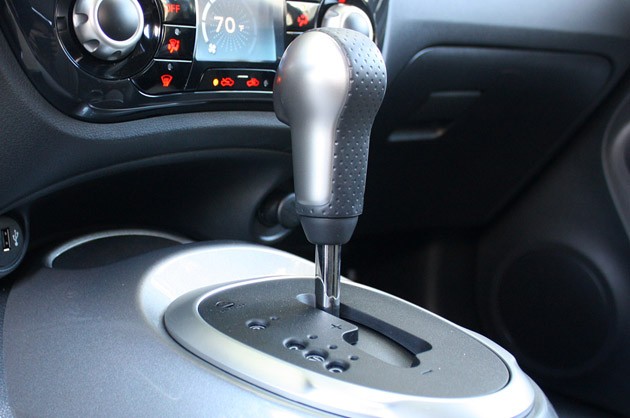
Whether you're running in the front-wheel drive Juke or the torque-vectoring all-wheel drive model with its upgraded multi-link rear suspension (FWD models use a torsion beam and stabilizer bar setup), you'll find that the 1.6-liter kicks out sufficient power to engender a fair bit of torque steer. It's not the sort of thing that threatens to yank arms from sockets like an old Saab turbo (or a new Mazdaspeed3), but the forced induction comes on hard and quick north of 2,000 rpm. And even though the all-wheel drive system can gerrymander the power split between the front and rear axles 50-50 as well as slosh torque side-to-side between the rear axles to curb understeer (which it does), you'll never mistake the Juke for a rear-driver. There's no axle tramp, however, and the light, accurate steering and gobs of grip from its wide Goodyear Eagle RS-A rubber means that you always feel in control, so much so that the nibbling torque steer is actually quite entertaining. There's very little body roll and the disc brakes are pleasingly firm as well, both of which help to reinforce the feeling that the Juke's dynamics skew firmly toward hot hatchdom.
We're glad Nissan has chosen to imbue the Juke's interior with the same sporty and spunky spirit as its sheetmetal, as porting over the Versa's sober interior would've been a disappointment. On the contrary, the cabin is a lively place, beginning with the bulbous painted transmission tunnel that's available in either silver or red. Said to be inspired by the gas tank on a motorcycle, we just think it's cool and appreciate that the gearshift is located high and within easy reach. Also welcoming are the easy-to-read analog gauges, small-diameter three-spoke wheel swiped from the 370Z and surprisingly supportive cloth seats (leather is standard on the range-topping SL), though the gray fabric on our tester seemed like a dirt magnet. Standard features are generous and there's even a low-priced navigation option that does the job nicely.
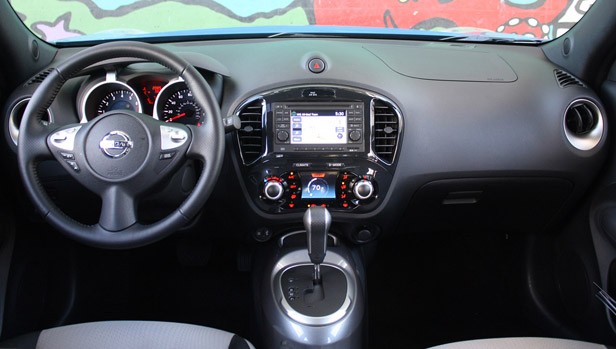
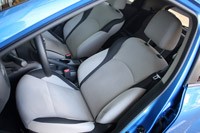
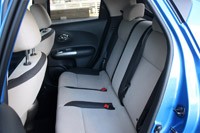
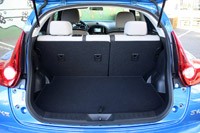
Going back to the aforementioned I-CON system for a moment, the drive mode functionality is only half the story – the same set of buttons and screen also supervise the HVAC controls. What's so interesting about some air-conditioning and defrost buttons? It's the display technology. By using multiple layers of Mylar filters, the labels on the switchgear changes almost as if by magic from heating and ventilation functions to the drive mode selector settings. It's seamless "well, would you look at that!" technology, and paired with a screen that's easy-to-see in all lights – even with polarized sunglasses on – it's exceedingly trick stuff that we expect to infiltrate Nissan's lineup in short order.
In fact, there's little we don't like about the Juke's interior. True, it lacks a telescoping wheel. And yes, the dashboard cap and door sills are made of unyielding plastic and the headliner is coarse enough to qualify for a grit rating, but the controls are all well-placed and visibility is surprisingly good. We particularly like how the tops of the turn signals are visible through the upright windscreen, as they allowed us to better place the corners of the Juke in an apex – not unlike an old Porsche 911. There's even a useful amount of cargo space without the seat folded (and a surprisingly generous storage bin lurks under the floor of front-drive models just above the donut spare). What there isn't a lot of, however, is rear-seat space – legroom in particular. But no matter, Nissan says the Juke is targeted at Maxim-reading frat boys and twenty-somethings, and it's not really reasonable to expect something with a titchy 99.6-inch wheelbase to be a family hauler anyhow.
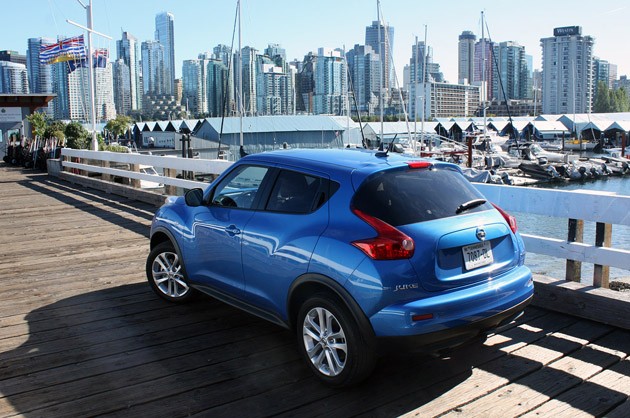
When pressed for a list of competitors, Nissan officials told us that they expect cross-shops as varied as the Scion tC, Mini Cooper, and Suzuki SX4. We can see some of that, as we tend to think that many of these buyers ask: "What's fun, funky and cheap enough that I can afford it?" Starting at just $18,960, the Juke definitely fits this category, but we can also see people stepping over from box cars like the Kia Soul, along with more traditional economy cars like the Honda Fit and the company's own Versa and Sentra. Nissan says it also expects car-conscious young people who might otherwise consider modding a used BMW 3 Series or Nissan 240SX to consider a Juke, which might be a tougher sell.
Photos copyright ©2010 Chris Paukert / AOL
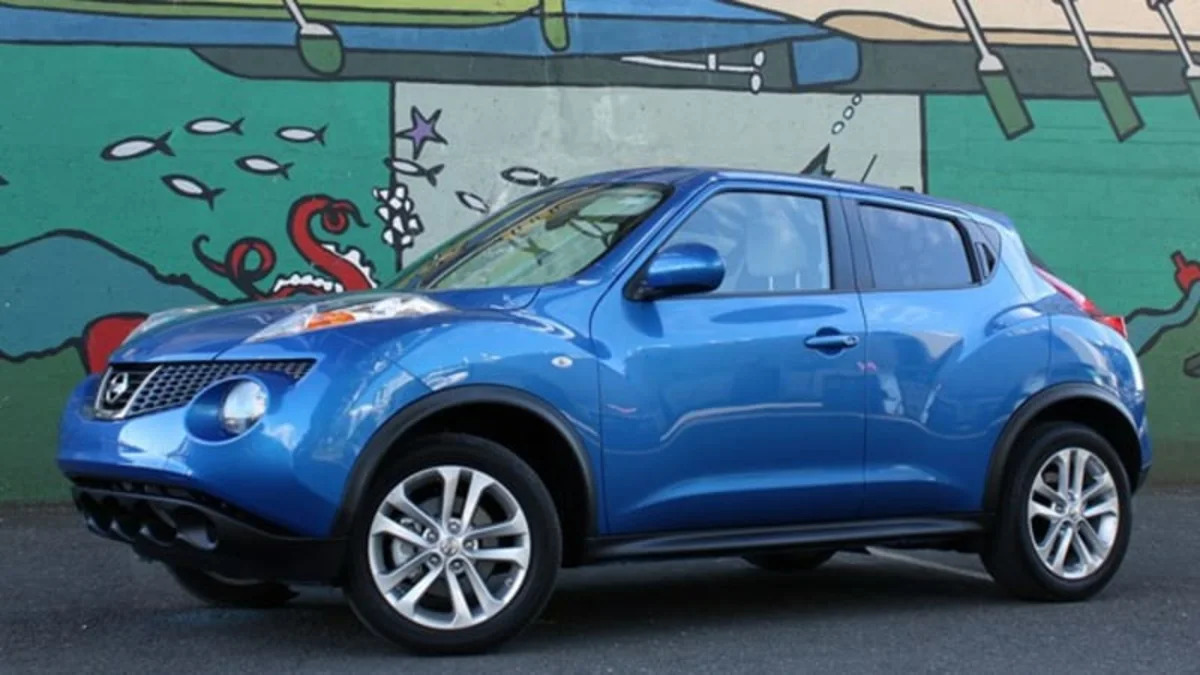
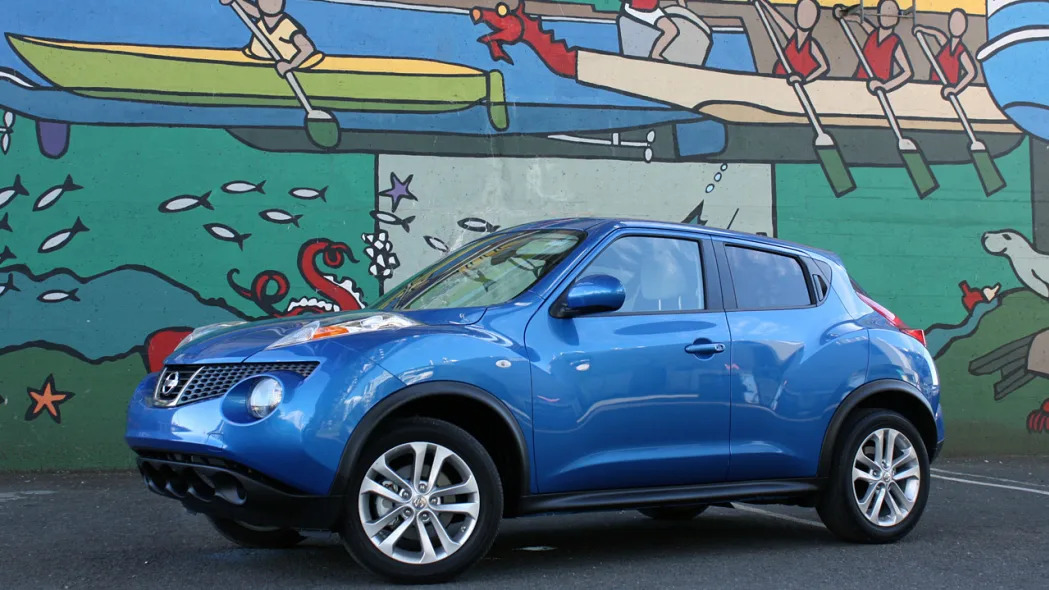
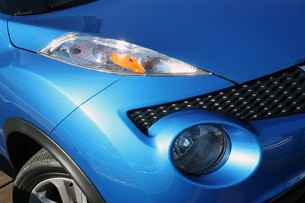
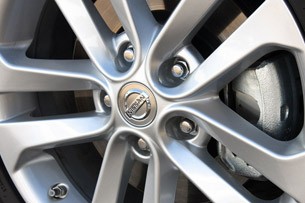
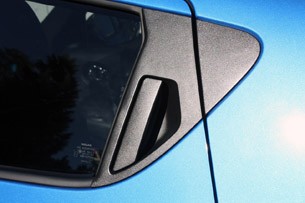
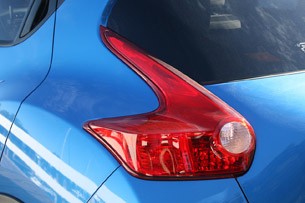

Sign in to post
Please sign in to leave a comment.
Continue